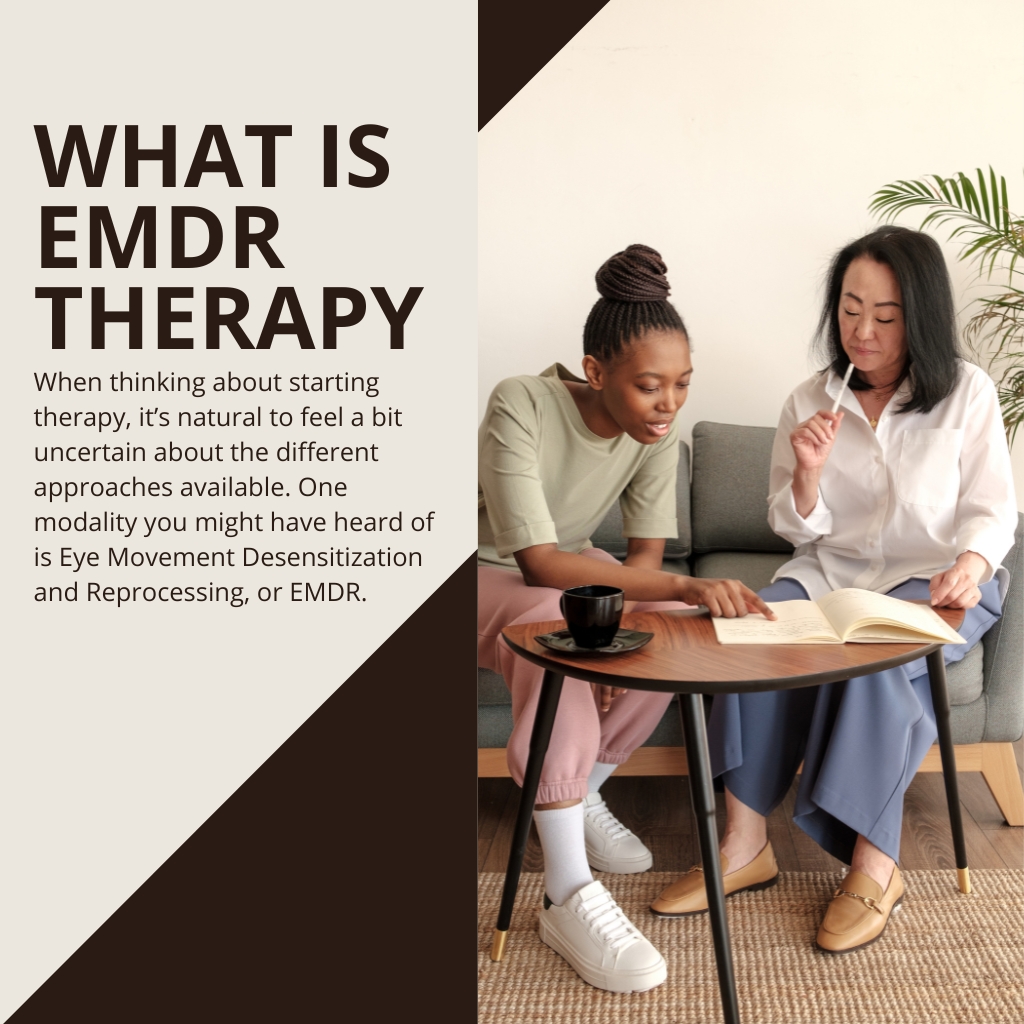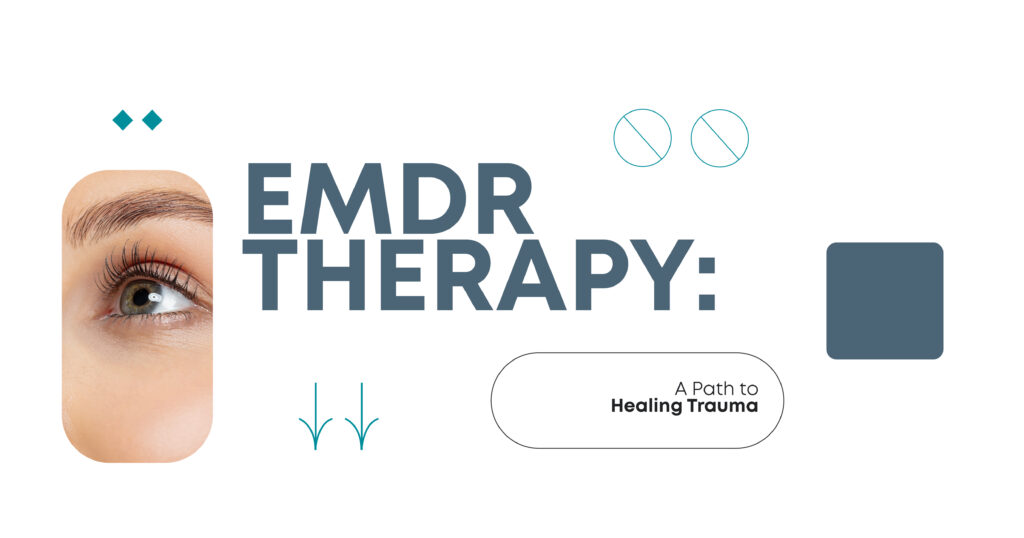How best emdr therapy in nyc supports mental strength
Exactly How EMDR Therapy Works: a Detailed Take A Look At the Refine and Its Performance
EMDR therapy has become a famous therapy for trauma-related disorders. Its structured approach includes numerous stages made to help with the handling of distressing memories. Central to this technique is the concept of reciprocal excitement, which plays a necessary function in just how memories are refined. Understanding these aspects exposes much regarding the therapy's efficiency. What specifically takes place during an EMDR session, and how does it affect the therapeutic trip?
Recognizing the Principles of EMDR Treatment
EMDR treatment, or Eye Motion Desensitization and Reprocessing, operates on the facility that unresolved traumatic experiences can prevent emotional health. This innovative therapeutic strategy aims to assist in the processing of traumatic memories, allowing people to gain a healthier point of view on their past. Central to EMDR is the principle of reciprocal stimulation, typically accomplished via directed eye movements, which is thought to help integrate traumatic memories into a much more flexible framework.

The 8 Stages of EMDR Treatment
The process of EMDR therapy unravels over 8 unique phases, each made to lead clients through a structured approach to healing injury. The very first stage includes history-taking, where the specialist analyzes the client's background and recognizes target memories. In the 2nd phase, customers discover relaxation strategies to manage distress. The 3rd stage concentrates on determining negative beliefs connected with the distressing memory.
The fourth phase is where the desensitization process starts, enabling customers to process the traumatic memory. The fifth stage includes setting up positive beliefs to replace the adverse ones. In the 6th phase, clients are assisted to examine their psychological and physical feedbacks to the refined memory. The 7th phase highlights closure, helping clients return to a state of stability. The 8th phase entails reevaluation, where clients and therapists evaluate development and attend to any kind of residual distress. This complete strategy fosters a path to healing and resilience.
The Function of Reciprocal Stimulation
Bilateral excitement is a crucial component of EMDR treatment, promoting the processing of terrible memories. This method includes alternating stimulation of both hemispheres of the mind, typically attained via eye activities, acoustic tones, or tactile feelings. The purpose of bilateral stimulation is to engage the brain's all-natural details handling system, which may become disrupted complying with injury.
By activating both sides of the brain, bilateral stimulation helps customers access and recycle distressing memories in a much more adaptive means. This method encourages the combination of emdr therapy stressful experiences, reducing their emotional cost and allowing clients to develop brand-new viewpoints.

Furthermore, reciprocal excitement may advertise relaxation and decrease anxiety during sessions, producing a safer setting for customers to challenge agonizing memories. Inevitably, this method enhances the healing process, allowing individuals to approach recovery and resolution.
Proof Sustaining the Effectiveness of EMDR
Research study has revealed that EMDR therapy works in dealing with various psychological conditions, particularly trauma (PTSD) Countless studies have shown significant decreases in PTSD symptoms following EMDR therapy. For example, a meta-analysis of randomized regulated tests found that EMDR was as effective as cognitive behavior modification (CBT) for PTSD, with lasting impacts observed even months after treatment. Furthermore, the American Psychological Association and the World Wellness Organization back EMDR as an advised therapy for trauma-related problems.
Past PTSD, study shows that EMDR can additionally profit individuals dealing with anxiousness, clinical depression, and anxieties. An expanding body of proof supports visit this page its usage in varied populaces, consisting of experts and children - emdr therapy new york city. Generally, the gathering research emphasizes EMDR's possible as a versatile therapeutic option, leading the way for further expedition into its systems and applications in mental wellness therapy
What to Anticipate Throughout an EMDR Session
During an EMDR session, clients can anticipate an organized yet versatile technique intended at handling terrible memories. The specialist starts by establishing a risk-free environment, where clients can feel comfortable sharing their experiences. Initial conversations focus on determining specific memories and connected negative ideas.
Customers are assisted to concentrate on these memories while concurrently participating in reciprocal stimulation, generally with led eye movements or tapping. This twin focus aims to facilitate the processing of the trauma, permitting clients to reframe their experiences and minimize emotional distress.
Throughout the session, specialists keep track of clients' responses, readjusting the speed and technique as needed. Sessions might include leisure strategies or cognitive restructuring to strengthen positive ideas. On the whole, customers can prepare for an encouraging ambience that encourages self-exploration and recovery, eventually causing a greater sense of psychological wellness.
Often Asked Concerns
Is EMDR Treatment Appropriate for Children or Adolescents?
EMDR treatment can be suitable for teens and youngsters, gave it is adapted to their developmental demands (best emdr therapy this contact form in nyc). Medical professionals usually modify methods to ensure security and efficiency, supporting younger populaces in handling trauma and psychological distress
How Long Does EMDR Treatment Normally Last?
EMDR therapy generally lasts between 8 to 12 sessions, with each session ranging from 60 to 90 minutes. Individual requirements and the complexity of trauma can affect the total period of treatment.
Can EMDR Treatment Be Done From Another Location or Online?
EMDR therapy can certainly be carried out from another location or online. Numerous experts have adjusted their methods to digital environments, enabling customers to participate in efficient sessions from the comfort of their homes, keeping restorative advantages.
What Are the Prospective Side Results of EMDR?
Potential adverse effects of EMDR therapy may include short-lived psychological distress, heightened stress and anxiety, brilliant memories, and physical discomfort. Individuals could additionally experience fatigue or headaches adhering to sessions, as the mind processes extreme sensations and memories.
How Does EMDR Compare to Traditional Talk Therapy?

EMDR therapy, or Eye Movement Desensitization and Reprocessing, operates on the facility that unresolved distressing experiences can impede psychological health. The procedure of EMDR treatment unravels over eight distinct stages, each developed to lead clients with an organized strategy to recovery trauma. Reciprocal excitement is a vital component of EMDR treatment, facilitating the processing of distressing memories. Throughout an EMDR session, clients can anticipate a structured yet adaptable technique aimed at handling distressing memories. Potential side results of EMDR therapy might include temporary emotional distress, heightened anxiety, dazzling memories, and physical discomfort.